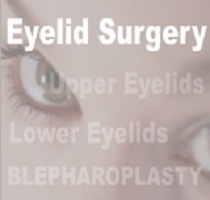Volume 2 • Issue 4
Thyroid Eye Disease

by David R. Jordan
M.D., F.A.C.S., F.R.C.S.(C)
INTRODUCTION
Toxic diffuse goiter (Graves’ Disease), Thyrotoxicosis, or Basedows’ Disease are names applied to the condition characterized by diffuse hyperplasia of the thyroid tissue, excessive secretion of its hormones and an increased metabolic rate. Although Robert Graves has his name attached to this entity as a result of articles he wrote on patients with thyroid disease and proptosis, it was also described earlier by Caleb Parry (1825) and subsequently by Carl Von Basedow (1840). It may therefore also be referred to as Basedows’ Disease (common in Europe).
Graves’ Disease is an autoimmune disorder where the patient’s own immune system (B-lymphocytes) produce autoantibodies that attack the thyroid gland causing production of thyroid hormones. Normally, the lymphocytic cells that produce these autoantibodies are destroyed by the patient’s own sur veillance system.. Suppressor T-lymphocytes and killer cells will destroy unwanted B-lymphocytes directed at the patient’s own body. For reasons not entirely clear (there may be a genetic predisposition), the immuno-regulatory surveillance system shuts down and these unwanted B-lymphocytes attack the person’s own tissue, in this case the thyroid gland. In about 10% of thyroid patients, the eye tissues will also be involved due to a similar attack on the extra-ocular muscles, fat and connective tissue within the orbit (thyroid orbitopathy or Grave’s orbitopathy).
What are the systemic symptoms of hyperthyroidism?
The symptoms and signs of Graves’ hyperthyroidism are the result of the excess amounts of thyroid hormone produced. Common symptoms include weight loss, nervousness, irritability, intolerance to hot weather, shakiness, rapid pulse, loss of body fat, thyroid enlargement, excessive sweating or muscle weakness.
What are the symptoms of thyroid related eye problems? (Grave’s orbitopathy)?
The eye disease affects females (usually middle aged) four to five times more frequently than males and may precede the hyperthyroidism or follow it, even years later. The eye disease may also occur in those with an underactive thyroid (hypothyroidism). When the eyes are involved, they become red, irritated and watery. The eyelids may swell, the eyes may bulge forward and there may be aching behind the eye [Figure 1]. The eyelids may retract upward giving the patient a characteristic “stare”. If the extraocular muscles become involved, double vision will occur. If this process continues on, the cornea may ulcerate and increasing pressure on the optic nerve may lead to decreased vision that can be permanent.
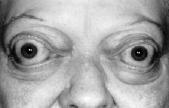
Figure 1 – Marked lid retraction and proptosis.
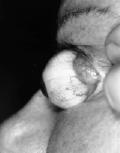
Severe proptosis, globe luxation and lacrimal gland prolapse.
What is going on in the eye socket?
The same immune mediated process occurring in the thyroid gland is going on in the orbit. Autoantibodies (produced by B-lymphocytes) are directed at the extraocular muscles, fat, connective tissue and lacrimal gland. The immune mediated process leads to inflammation and deposition of hydrophilic mucopoly-saccharides and collagen. Swelling of the tissues (secondary to inflammation) leads to the “eye signs” mentioned above. Eventually, scarring may set in, leading to a permanent disfigurement, even when the disease becomes quiet.
How does one treat thyroid disease?
Because Graves’ disease is caused by a genetically determined abnormality of the immune system, the problem is complex and there is, at present, no specific treatment for the underlying abnormality. Since the end result of this process is an over stimulation of thyroid function, treatment of the systemic symptoms is usually straight forward – one can either surgically remove part of the thyroid gland, destroy the thyroid gland with radioactive iodine or block thyroid hormone production with antithyroid drugs. Some patients are difficult to control and may require more than one of these treatments.
How is the eye disease treated?
Once the thyroid gland is destroyed, there is less thyroid hormone around and the systemic symptoms resolve. Unfortunately, the eye changes do not necessarily resolve. It is now thought the eye disease and the thyroid disease may be two separate autoimmune diseases that are closely related. It is important for the patient to know that, although the thyroid gland is treated, the eye disease may continue to progress, resulting in more severe eye symptoms.
The inflammatory disease process in the eye area runs a course from 3 months to 3 years at which time it burns out. Eye changes may be mild or may become quite progressive and severe, endangering the vision during this time. Once the disease is burned out, some of the signs may resolve but in the overwhelming majority some disfigurement remains.
Patients with Grave’s orbitopathy require regular Ophthalmologic assessment (every 1 to 3 months) to monitor (and treat) the potentially devastating complications.
What treatment is available for the eye disease?
Two phases of eye treatment should be considered. The first phase involves treating the active disease. The second phase involves correcting the disfiguring changes the disease has caused. Treatment during the active phase of the disease focuses on preserving sight. Initially, the patient may only require artificial tears, lubricating ointment and occasionally taping the lids closed at night, for comfort. If the inflammation is excessive, oral steroids may be prescribed for 6 to 12 weeks and then discontinued. If the patient had a good response to steroid but relapses, orbital radiation is considered. If at any time during this active phase, the sight becomes endangered, urgent surgery to expand the eye socket (decompression) is performed.
Once the active phase is quiet, the patients are assessed for residual disfiguring changes left by the thyroid eye disease. There are a number of reconstructive procedures available to return the patient to a normal appearance.
What are the reconstructive surgeries available to the thyroid patient with eye disease?
There are four stages of surgical rehabilitation to consider:
1) orbital decompression: this surgery requires a general anesthetic and involves removing bone from around the eye socket. The orbital tissues expand into the space created and the eye moves back. Risks and complications are very uncommon but may include: bleeding, infection, double vision, cerebrospinal fluid leak, decreased vision, blindness (extremely rare). If the surgery is done by an experienced surgeon, the risks and complications are minimal [Figure 2].
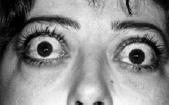
Figure 2 – Severe thyroid eye disease (Lid retraction, proptosis, decreased vision).
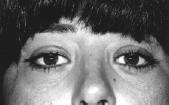
Following orbital decompression, upper and lower eyelid surgery.
2) double vision surgery: The ocular muscles are adjusted to relieve double vision. One or both eyes may require surgical adjustment of their muscles. The two most important fields of view are straight ahead and down gaze. In some patients, it can be quite difficult to completely correct the double vision and occasionally more than one surgery is required to do so [Figure 3].
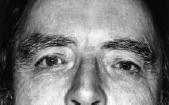
Figure 6 – Lid retraction and ocular misalignment.
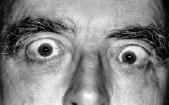
Following lid surgery and extraocular muscle surgery.
3) eyelid surgery: the upper eyelids can be lowered and the lower eyelids can be raised. This may be the only surgery required for some patients and is quite straight forward. The surgery is done as an outpatient under local standby anesthesia. Risks and complications are minor and include temporary eye irritation, bruising and occasionally the need for a touch-up if surgery does not give the desired result.
4) blepharoplasty: The last surgical stage is a “touch-up stage” and may involve the removal of excess skin or fat in the eyelids (blepharoplasty). This surgery is done under local anesthesia as an outpatient and is quite straight forward. Risks and complications are few and may include bruising, infection, or temporary irritation of eyes.
Which surgery is required will depend on how the thyroid eye disease has affected the patient’s eyes. Some may require no surgery, others may require only the eyelid surgery or extra-ocular muscle surgery. It is essential not to do the reconstructive surgery until the disease has moved into the non-inflammatory quiescent phase. It can be very frustrating for the patient during this time as the disease is not only disfiguring but can create a number of problems making it quite difficult for the patient to continue on at work or home activities.
New Horizons
Several studies have now shown a strong association between tobacco smoking and thyroid eye disease. However, there is no data available at this time to show whether cessation of smoking by patients will decrease the risk of development or progression of the eye disease.
If you have any questions regarding the topics of this newsletter, or requests for future topics of InSight, please contact Dr. David R. Jordan office by telephone at (613) 563-3800.


